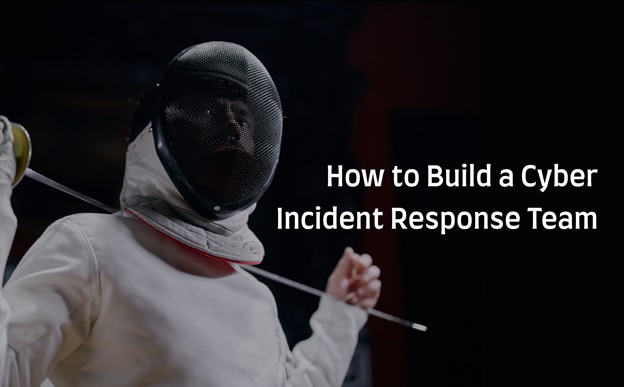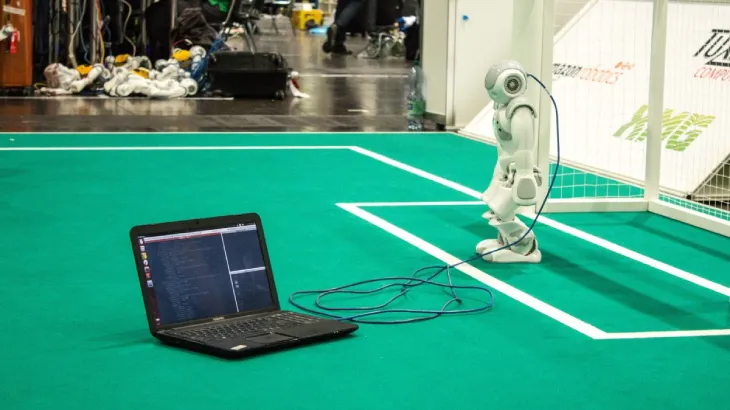

Mastering Cyber Incident Response: Build Your Elite Team Today
Putting Together a Cyber‑Incident Response Dream Team
When business leaders picture cyber‑security, they often think of sleek gadgets and black‑box algorithms. In reality, it’s more like a well‑coordinated orchestra that plays in sync with every part of the company. If you’re not lining up the right players, you’re basically inviting trouble. That’s why 8 out of 10 cyber‑executives admit their firms aren’t quite ready for the next wave of attacks.
Why it Matters
- New threats are evolving faster than a squirrel on espresso.
- Without a robust plan, a single breach can cost millions and shatter customer trust.
- A smooth response reduces downtime and keeps the business humming.
The Three Stages of Incident Management
Think of a cyber incident as a “three‑act drama.” You need a director, actors, and a stage crew for each act.
Act 1 – Prevention (Before the Show)
Set the Stage: Identify your critical assets, understand your vulnerabilities, and pull in the right tech tools. Governance, training, and threat hunting are your pre‑show rehearsals.
Act 2 – Real‑Time Response (During the Show)
Take the Mic: Have a rapid‑reaction squad that includes:
- Security analysts to spot the alarm.
- IT operations to isolate affected systems.
- Legal counsel to keep you compliant.
- PR officers to tell the story without panic.
Keep communication tight—victim stories end up in one table, not a scatter of emails.
Act 3 – Recovery (After the Curtain Falls)
Wrap It Up: Clean up, patch up, and review. Learn from the mishap—new policies, fresh training sessions, and perhaps a “black box” audit log.
Building the Dream Team
Here’s a quick cheat sheet to get your squad together:
- Define Roles: Who does what? Make job titles crystal‑clear.
- Train Regularly: Simulate attacks, run drills, and keep the team sharp.
- Use a Unified Platform: One pane of glass for alerts, containment, and reporting.
- Foster Cross‑Functional Play: Break the silo walls. Operatives, engineers, legal, and the board should all collaborate.
- Stay Agile: Update protocols as new threats creep in.
Remember: the right mix of people, technology, and culture beats a shiny firewall any day.
Final Thought
If you treat cyber‑security like a midnight dance party where no one knows the steps, you’ll get tripped. Assemble your response crew, rehearse the choreography, and be ready to turn any breach into a lesson rather than a disaster.

Meet the Cyber Defense Squad
Think of a Cyber Incident Response Team (CIRT) as your company’s secret superhero squad. They’re the ones who keep the villainous hackers at bay and make sure the business keeps humming even after a cyber‑attack.
- In‑house SOC heroes – The day‑to‑day guardians of your security center.
- Small‑to‑mid‑size specialists – Those who live and breathe IT security in the trenches of midsize shops.
- On‑demand air‑bag crew – When the going gets tough, we call in a full‑force team that lifts you out of danger.
Why Aren’t Any Two Footloose Goliaths Equal? The Need for Qualified Specialists
It doesn’t matter how you hire or scramble a response crew. Every member must have the gear, the grit, and the knowledge to shut down a cyber menace fast.
- They know the exact algorithm to stop an intrusion before it turns into a full‑blown fiasco.
- They’re guided by a clear, step‑by‑step playbook—no mystery, no guesswork.
- When the bad guys sneak in, the team must restore systems in minutes and keep the boss in the loop.
- If a cyber incident is unavoidable, the squad will pivot, act decisively, and keep stakeholders fully informed.
Table of Contents
- Cyber Incident Response Plan: The Notion & Essence
- Building a Cyber Incident Response Team: The Main Stages
- CSIRT Location: A Key to a Successful Incident Response
- Automation in Cybersecurity Incident Response: The Essence
- To Conclude: What You Should Keep In Your Playbook
What’s the Essence of a Cyber Incident Response Plan?
Picture this: A clear, well‑painted map that tells every team member exactly where to pull the fire‑extinguisher when a cyber‑intrusion pops up. It’s the blueprint that keeps your defense tight and your reaction swift.
The Main Stages of Building Your CIRT
- Identify and assign roles.
- Develop response playbooks.
- Test with realistic simulations.
- Refine, iterate, and keep learning.
Why CSIRT Location Matters
Where you set up your CSIRT—inside the company, at a partner’s office, or in the cloud—can be the difference between a chaotic scramble and a coordinated smart response. Choosing the right spot can make or break your incident recovery.
Automation: Your Secret Weapon
Automating routine tasks frees up human brains for the tough‑cases. Think quick triage, rapid containment alerts, and auto‑patching—all streamlined so you can focus on the high‑stakes moves that actually stop an attacker.
Conclusion: Wrap It All Up
At the end of the day, a cyber incident response team isn’t just a nice‑to‑have. It’s the backbone that lets your business stay resilient, your stakeholders trust you, and your cybersecurity strategies keep evolving.
Cyber Incident Response Plan: The Notion & Essence
Getting Ready for the Cyber Bad Guys: A Quick Blueprint for Incident Response
Think of your incident response plan as the blueprint for a superhero team—only the heroes deal with hackers, malware, and all those pesky security hiccups. Below is a friendly rundown of what you need to set up before the next cyber attack rolls in.
1⃣ What’s an Information Security Incident?
Simply put, it’s any event that threatens the confidentiality, integrity, or availability of your data. That could be a phishing email, a ransomware detour, or a rogue insider. The key is that it’s a problem that needs a response.
2⃣ Sorting the Threats by Risk
- Low‑Risk – Minor data leaks, low‑profile phishing.
- Moderate‑Risk – Noticeable breaches, potential for data loss.
- High‑Risk – Critical system compromises, large‑scale outages.
3⃣ Crafting a Clear, Understandable Plan
Write the plan in plain English so everyone—from the intern to the CEO—gets what’s expected. Break it into bite‑size actions: who does what, when does what happen, and how fast you need to react.
4⃣ Assemble the Response Squad
- IT & Security Professionals
- Legal & Compliance Folks
- Communications / PR Team
- Finance for rapid budgeting
Run mock drills so they’re all on the same page.
5⃣ Keep Improving & Checking Back
Run post‑incident reviews, update the playbook, and tweak the process. The goal? Faster containment and quicker recovery.
6⃣ Record Every Move
Maintain a log of all investigations—who acted, when, and with what result. This data helps refine your defenses over time.
7⃣ Fund the Defenses, Not Just the Repairs
Allocate budget for:
- Modern up‑to‑date security hardware
- Latest threat‑detection software
- Ongoing staff training
- Insurance to cushion unavoidable losses
What SANS Says: The 6‑Step Response Cycle
1. Train Your Crew
Keep your team sharp with continual training, handy gear, and hands‑on drills—because real‑world skills beat textbook knowledge any day.
2. Spot the Incident Quickly
Use monitoring tools, logs, and alerts to catch problems as soon as they pop up, then assess how bad they could be.
3. Isolate the Bad Stuff
Slice off infected systems from the network, shut down malicious processes, and, if possible, mend any damage.
4. Root‑Cause Investigation
Find the needle in the haystack—identify how the attack happened, which vulnerable point was exploited, and why.
5. Restore & Harden
Bring systems back to life, patch the vulnerabilities, and make sure those same mistakes can’t slip through again.
6. Review & Upgrade
Do a gap analysis of the response itself, update the playbooks, and keep the technology current. The faster you learn, the more resilient you become.
Why Your Company’s WISP and Training Must Keep Up
Cyber threats win’t wait for you to lag behind. Your Web & Information Security Policy (WISP), data handling rules, employee training, protective hardware/software, and insurance lineup all need to evolve in concert with the threat landscape. Don’t let stagnation be your secret weapon—sharpen every tool, tighten every policy, and empower your team to fight back.
Bottom line: with a solid plan, continuous training, and a plan that never stops iterating, you’ll slash the time it takes to stop an attack and get your systems back on track. Stay ahead, stay prepared, and let the digital battlefields become just another day in the office—if you can thank your awesome response squad for that!
Building Cyber Incident Response Team: The Main Stages

Solving the Security Puzzle: How a Team of Experts Pulls It Off
When a cyber‑attack hits, the chaos begins. It’s not just the IT guys who get to work – in fact, it’s a whole squad of specialists from every corner of the company that comes together. Think of it like a superhero squad, but instead of capes, they’re armed with legal briefs, analytics, and a lot of coffee.
Meet the crew
- Captain Coordinator – the one who keeps everyone on track and tells the story to the executives.
- Public Relations Pro – a PR wizard who can rewrite the incident into a positive spin (or at least make it sound less dramatic).
- Analytics Lead – the detective who digs up the root cause, guides the tech support, and makes sure the systems are back to business.
- Threat Research Squad – sleuths who scour the dark and gray areas of the internet to understand the threat’s context.
- Legal Eagles – lawyers who decide if the breach could lead to criminal charges and draft the necessary legal actions.
Why a CSIRT is essential
Most companies set up a Computer Security Incident Response Team (CSIRT). It’s the unofficial “fire‑fighter” squad: experts and consultants in both legal and technical realms, ready to jump in whenever the next cyber‑flood comes.
Bottom line
It’s a coordinated effort: each member plays a distinct role, yet they all share the same goal – to bring the company back to safe, happy operations as fast as possible. And just like in any good drama, the best shows are the ones where everyone has a clear script and a pointy hat.
CSIRT Location as The Key to A Successful Incident Response
Always‑On Security: Why CSIRT Needs a Global Force
Security’s not a boring 9‑to‑5 gig—it’s round‑the‑clock, year‑round hustle. That’s why CSIRT professionals are stationed worldwide: no matter where you are, there’s always someone keeping an eye on things.
When a teammate is on vacation or the weekend, you don’t just let the system go feral. You lock in a backup shift and keep the coverage tight.
Off‑hours and holidays can be outsourced to external responders, but you still need dedicated staff to keep those response times snappy.
- Global spread = 24/7 coverage, no matter the timezone.
- Reserve a backup if anyone’s out of the loop.
- External help works for night and holiday shifts, but response time stays on point.
What Is the Essence of Automation in Cybersecurity Incident Response?

Why Automation is the Real Hero Behind CSIRT
The shortage of skilled CSIRT heroes is a hard truth— there just aren’t enough people who can jump into a cyber crisis with the same skill and speed. That’s why automation steps up, not only to locate threats but to eliminate them before the human team can even say fire! These trusted tools provide the skeleton that CSIRT pros flesh out.
Scripts & Codeless Workflows: The Go-To Day‑to‑Day Tools
- Instant Repeaters: Scripts run the same tasks over and over, from server scans to patch updates.
- No Code Option: Drag‑and‑drop flows let non‑coders launch rapid responses.
- But, they’re not a full substitute for seasoned analysis.
Every Incident is Like a One‑Off Mystery
- Each event requires a custom mindset—no two incidents read the same way.
- Only a human can ask the right “who, what, where, when, why, and how” questions.
- Leverage logs, network taps, and good old-fashioned detective work.
The Investigation Phase: Two Essential Stages
- Data Collection: Harvest evidence from servers, routers, logs, and even the human footprints left by attackers.
- Forensic Analysis: Dive deep, piece together timelines, and uncover the root cause.
From Response to Strategy
- Every hit of data gets fed back into the incident response training loop, tightening the whole plan.
- Automated scripts will handle the checklist, but they can’t strategize a new cyber‑security outlook.
- Human analysts spot patterns, suggest policy changes, and champion the next evolutionary step— strategic cyber management.
Bottom line: Automation is essential, but it’s just the engine. The driver— the analyst— must navigate that engine toward a safer, smarter cyber future.
To Conclude
Caution: Your Digital Life Is at Risk
The Problem: Unauthorized Data Access
In today’s high‑speed digital world, almost every piece of personal or confidential information lives in the cloud or on hard drives. When hackers sneak a peek, it’s like someone pulling your wallet out of your pocket—nothing feels as safe as that.
What a CSIRT Can Do for You
- Stop the chaos: Keep the team on the same page and get the business back up and running fast.
- Secure the evidence: Collect and lock down data so you can show the culprit in court or in civil suits.
- Protect your rights: Stand up for privacy laws and defend everyone’s personal info.
- Minimize damage: Cut down on IT downtime and keep the system’s integrity, availability, and confidentiality intact.
- Save the brand: Shield your company’s reputation from the fallout of data breaches.
Third‑Party Expertise vs. In‑House Heroes
You can choose to bring in seasoned external specialists or lean on your own IT staff. Either way, the key is to carefully assess what your organization actually needs—and how bad the consequences could be if a cyber‑incident happens. Think of it like deciding whether you want a top‑tier security consultant or a dedicated, trained member of your own security squad. The right move depends largely on your risk tolerance and the criticality of the data you protect.
Your Next Step
Take a quick risk audit, weigh the potential damage, then decide: hire a CSIRT, build one in-house, or blend both. The more thorough your understanding, the stronger your defense.







